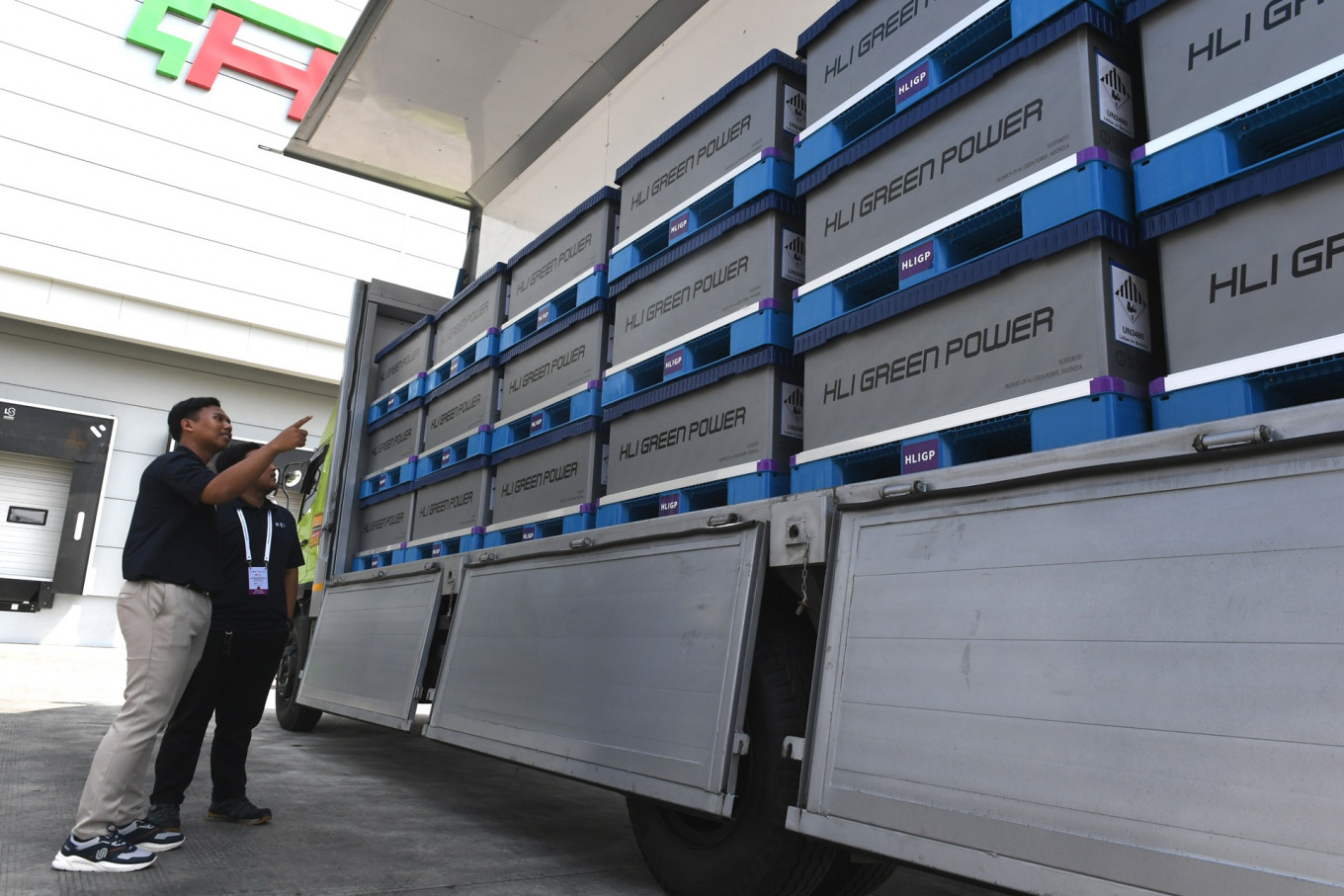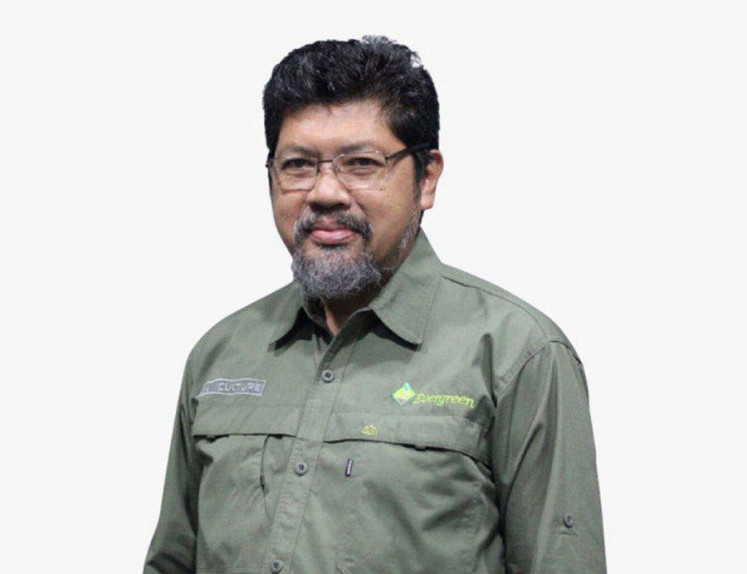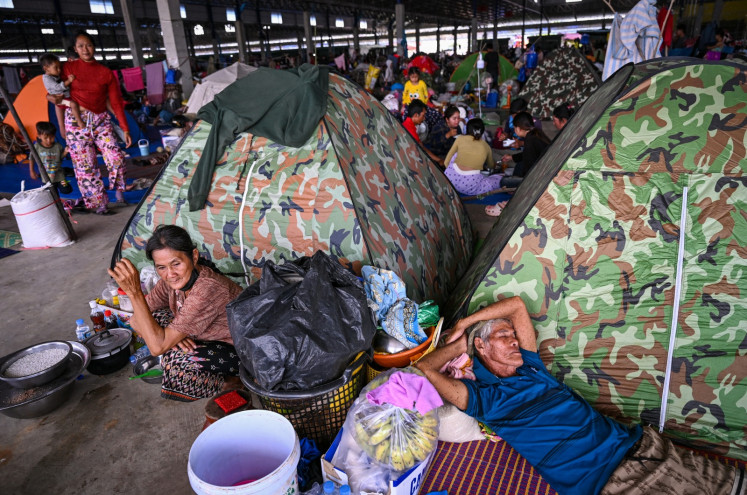Popular Reads
Top Results
Can't find what you're looking for?
View all search resultsPopular Reads
Top Results
Can't find what you're looking for?
View all search resultsRegenerative manufacturing: Indonesia’s engine for economic growth
Strengthening the local ecosystem, mainly through special economic zones, will be crucial for attracting FDI and establishing a solid manufacturing base.
Change text size
Gift Premium Articles
to Anyone
I
ndonesia stands at a pivotal moment. In his inaugural speech, President Prabowo Subianto emphasized a solid commitment to economic reform, which aligns with the groundbreaking concept of regenerative manufacturing.
This approach to manufacturing goes beyond traditional methods, focusing on innovative and sustainable production processes that can significantly drive economic growth.
With a workforce of 214 million and rich in natural resources, Indonesia is well-equipped for a manufacturing revival that not only spurs domestic development but also positions the country as a leader in sustainable production on the global stage.
The manufacturing sector is the engine of ASEAN’s economy, contributing 22 percent to the region's gross domestic product (GDP). Indonesia, a key player in this dynamic landscape, is uniquely positioned to capitalize on the projected 6 percent annual growth in ASEAN manufacturing, reaching a combined gross output of US$1.2 trillion by 2030.
Kearney’s recent study, "Regenerative Manufacturing: Unlocking ASEAN's Growth through Design and AI," projects Indonesia's share of this growth to be substantial, reflecting the nation's inherent strengths and potential.
One of Indonesia's key advantages lies in its natural resources. The country boasts a rich supply of raw materials, particularly nickel, where it holds 24 percent of the world's reserves. This advantage gives Indonesia a strong position for cost-effective production, especially in the rapidly expanding electric vehicle (EV) sector.
By implementing a ban on nickel exports, the government has successfully attracted foreign direct investment (FDI), bringing in major players like Contemporary Amperex Technology Co., Limited (CATL) from China and the Hyundai-LG partnership from Korea to set up local battery production. This strategic decision not only places Indonesia firmly in the global EV supply chain but also nurtures the development of a thriving domestic industry.
However, more than merely utilizing existing resources is needed to unlock Indonesia's full manufacturing potential. A shift toward regenerative manufacturing is essential. This approach involves optimizing current processes and fundamentally rethinking the entire value chain, from design to delivery, to achieve profitable, resilient and sustainable outcomes.
Regenerative manufacturing is built on two main pillars: Innovative product design and artificial intelligence (AI)-enabled solutions. The innovative product design stage is critical because it sets the foundation for sustainability, cost-effectiveness and adaptability.
Manufacturers can better anticipate market shifts and supply chain challenges by focusing on product design. Prioritizing customer needs in design, rather than just minimizing costs, is essential for staying competitive. Additionally, integrating sustainability into product design from the start is both ethically important and strategically savvy, especially as consumers increasingly prefer sustainable options.
AI plays a pivotal role in this transformation. By integrating AI throughout the value chain, manufacturers can enhance design, improve efficiency and make informed decisions based on data.
While many Indonesian manufacturers see the value of AI, full implementation is still in its early stages. However, the potential benefits are vast, offering opportunities for improved efficiency, product quality and sustainability, ultimately providing a significant competitive advantage.
The ASEAN manufacturing landscape is undergoing fundamental changes, presenting both challenges and opportunities for Indonesia. A growing emphasis on sustainability aligns with global trends. It allows Indonesia to aspire to take on a leadership role in sustainable manufacturing.
As the industry shifts toward higher-value activities such as research and development and product design, there will be an increased need for skills development and investment, creating ample room for progress.
Implementing "twinning" models, where manufacturing facilities are replicated strategically, can enhance resilience, increase supply chain diversity and mitigate disruption risks. Strengthening the local ecosystem, mainly through special economic zones, will be crucial for attracting FDI and establishing a solid manufacturing base.
The Indonesian government is actively supporting this transition through initiatives like the Regional Comprehensive Economic Partnership (RCEP) free trade agreement and targeted efforts to boost investment in the EV sector.
The journey toward regenerative manufacturing will involve continuous learning and adaptation. To unlock Indonesia's full potential, three key actions are vital, a thorough assessment of current product design and its impact on the overall value chain, a solid push to elevate product design to a strategic level within corporate leadership and the creation of a detailed road map to implement regenerative manufacturing principles.
As Indonesia embarks on this exciting journey, the focus on regenerative manufacturing could redefine its economic landscape and solidify its position in the global market.
***
The writer is Asia-Pacific colead for operations and performance at Kearney.











